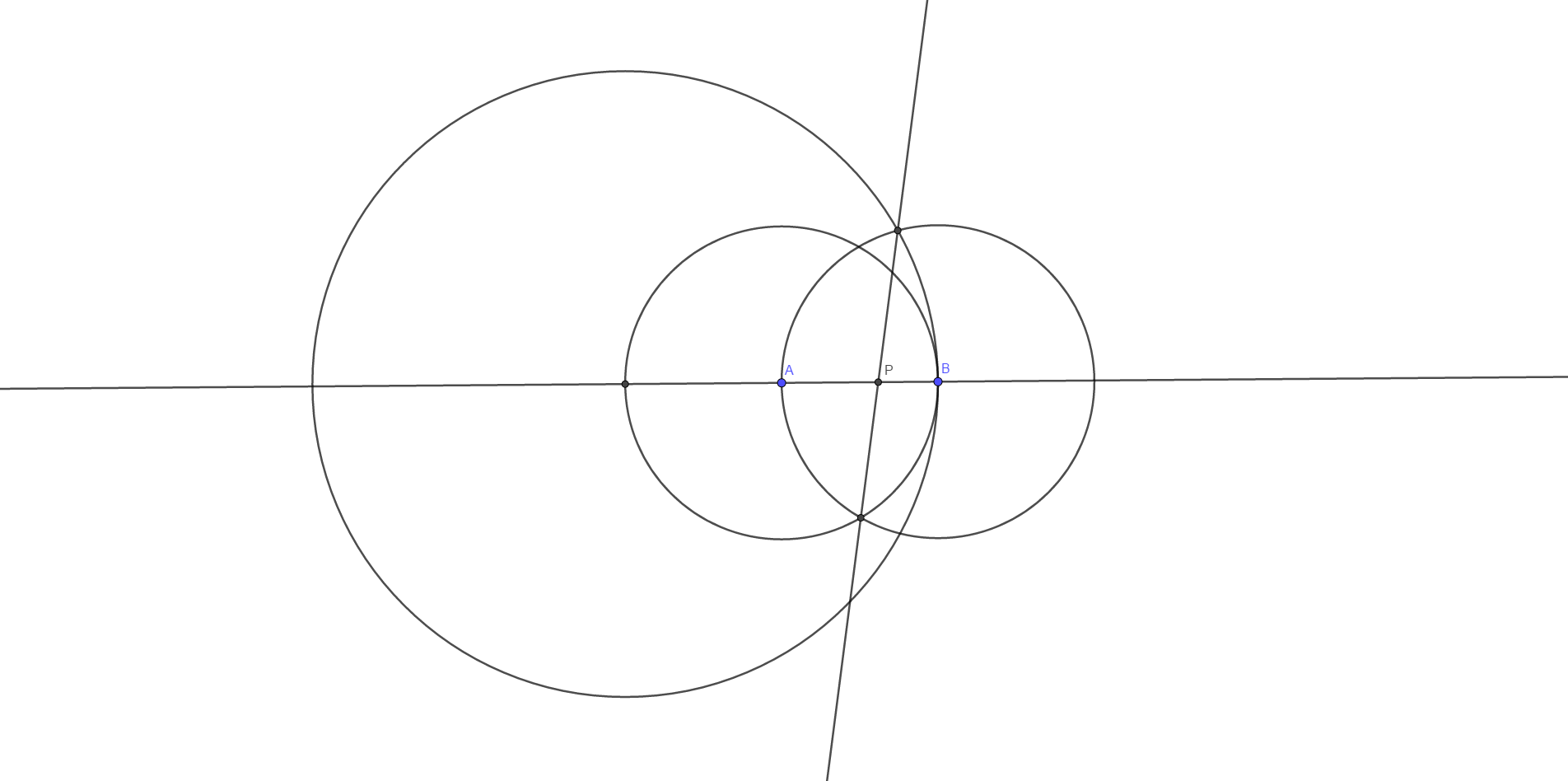The death star's ratio
In the figure below, if then what is

The answer is 8.755615652.
This section requires Javascript.
You are seeing this because something didn't load right. We suggest you, (a) try
refreshing the page, (b) enabling javascript if it is disabled on your browser and,
finally, (c)
loading the
non-javascript version of this page
. We're sorry about the hassle.
Let D be the center of the big circle, C be the other point of intersection between circle D and line A B , G be the point of intersection of the line and circle D and circle B , and H be the point of intersection of the line and circle A and circle B . Construct triangles △ B C G and △ A B H . Let F G be the altitude of △ B C G and let E H be the altitude of △ A B H . Finally, let r = A B .
Since △ B C G is inscribed in circle D with B C as its diameter, ∠ B G C is a right angle. Since the radius of circle C is equivalent to the diameter of circle A , the diameter B C = 4 r . Since B G = A B = r , by Pythagorean's Theorem C G = B C 2 − B G 2 = ( 4 r ) 2 − r 2 = 1 5 r . We also have that △ B C G ∼ △ B G F by AA similarity, so B F = B C B G 2 = 4 r r 2 = 4 1 r and F G = B C B G ⋅ C G = 4 r r ⋅ 1 5 r = 4 1 5 r .
Since A B = B H = A H = r by the radii of congruent circles, △ A B H is an equilateral triangle, and B E = 2 1 r and E H = 2 3 r .
Setting B as the origin, the coordinates for G are ( − 4 1 r , 4 1 5 r ) , the coordinates for H are ( − 2 1 r , 2 3 r ) , and the coordinates for P are ( − π 1 7 , 0 ) . The slope between G and H comes to m = 1 5 + 2 3 , and its equation of the line through G and H is y − 4 1 5 r = ( 1 5 + 2 3 ) ( x + 4 1 r ) . But since P is on this line, we can substitute x = − π 1 7 and y = 0 to obtain − 4 1 5 r = ( 1 5 + 2 3 ) ( − π 1 7 + 4 1 r ) , which solves to r = 2 π 5 1 + 1 7 5 .
Since A P = A B − P B , A P = 2 π 5 1 + 1 7 5 − π 1 7 = 2 π 1 7 + 1 7 5 ≈ 8 . 7 5 5 6 1 5 6 5 2 .